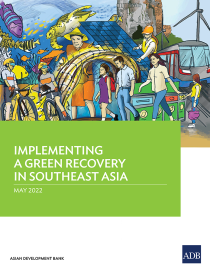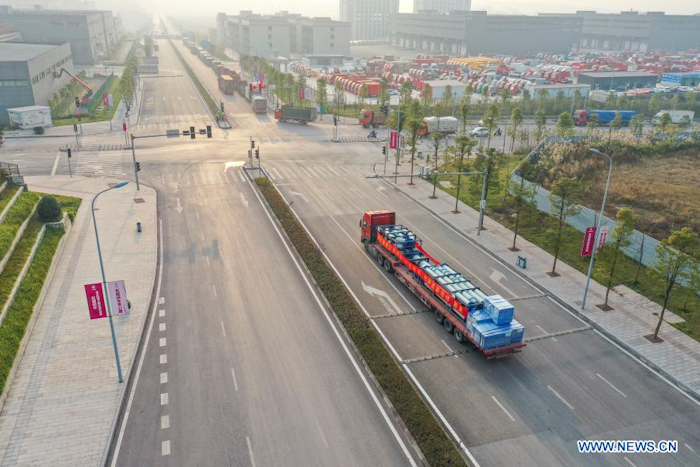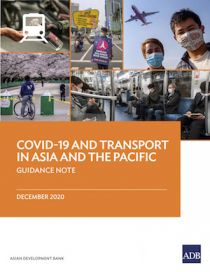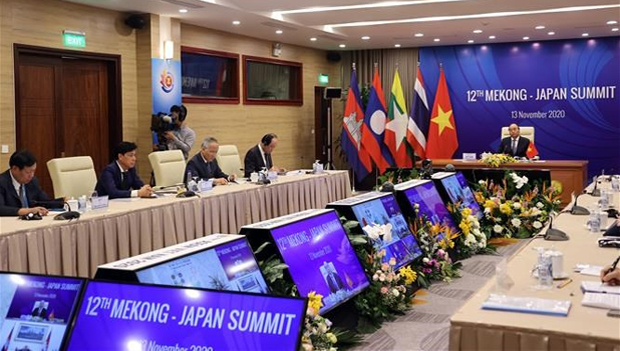
Implementing a Green Recovery in Southeast Asia
This report explains why Southeast Asian countries need to design pandemic recovery policies that hit both ambitious socioeconomic and environmental goals.

This report explains why Southeast Asian countries need to design pandemic recovery policies that hit both ambitious socioeconomic and environmental goals.

Aerial photo of the Nanpeng Highway Bonded Logistics Center in southwest China's Chongqing Municipality via Xinhua
Cross-border highway freight service in Chongqing, People's Republic of China, grew significantly in the first half of 2021. Data from Chongqing Highway Logistics Base showed that 1,666 trucks transported goods worth about 997 million yuan ($154 million), up 70% and 107% year on year, respectively, from January to June. Chongqing launched its cross-border highway freight service in 2016. This year, it started new highway cross-border freight routes linking the inland city with Vientiane, Lao PDR. The service presently operates nine routes linked to ASEAN countries and Central Asia.
Roads in Asia and the Pacific have brought us essential supplies and services, frontline workers, food and now vaccines. It is time to revive these vital arteries to prepare for economic recovery.

This guidance note documents how the coronavirus disease (COVID-19) has affected the transport sector in developing Asia and the Pacific region, from personal mobility and public transport to the aviation industry, among other facets.
The Asian Development Bank (ADB) has released a first batch of data as part of a new regional knowledge platform to guide sustainable transport development in Asia and the Pacific.
The Government of Viet Nam will host the 24th Greater Mekong Subregion (GMS) Subregional Transport Forum (STF–24) on 21 January 2021 with the theme “Forging Greater Transport Connectivity Toward the Visions of GMS-2030.”
The Ministry of Transport (MOT) of the Socialist Republic of Viet Nam and the Asian Development Bank (ADB) jointly organized the 24th Meeting of the Greater Mekong Subregion (GMS) Subregional Transport Forum (STF-24) virtually held on 21 January 2021. The theme of STF-24 was “Forging Greater Transport Connectivity Toward the Visions of GMS 2030”.
The region’s success with decades of growth and poverty reduction is due in large part to the international movement of trade, capital, people, knowledge, and resources – not only within the region but with the rest of the world. This type of regional cooperation is also a powerful tool in addressing the pandemic.
The 24th GMS Ministerial Conference (MC-24) was held on 4 November 2020 with the theme “Pave the way to a more integrated, inclusive, sustainable and prosperous GMS.”

The 12th Mekong-Japan Summit took place virtually on 13 November as part of the 37th ASEAN Summit and Related Summits. Photo by VNA via VNExplorer.
Japan and Mekong countries convened the 12th Mekong-Japan Summit on 13 November, cochaired by Japan Prime Minister Suga Yoshihide and Viet Nam Prime Minister Nguyen Xuan Phuc. The meeting underscored Japan’s strong commitment to the Mekong subregion and reviewed progress of cooperation between Japan and Mekong countries (Cambodia, Lao People’s Democratic Republic [PDR], Thailand, Myanmar, and Viet Nam) as guided by the "Tokyo Strategy 2018." The Strategy seeks to strengthen connectivity, improve human resource development, and enhance environmental protection.